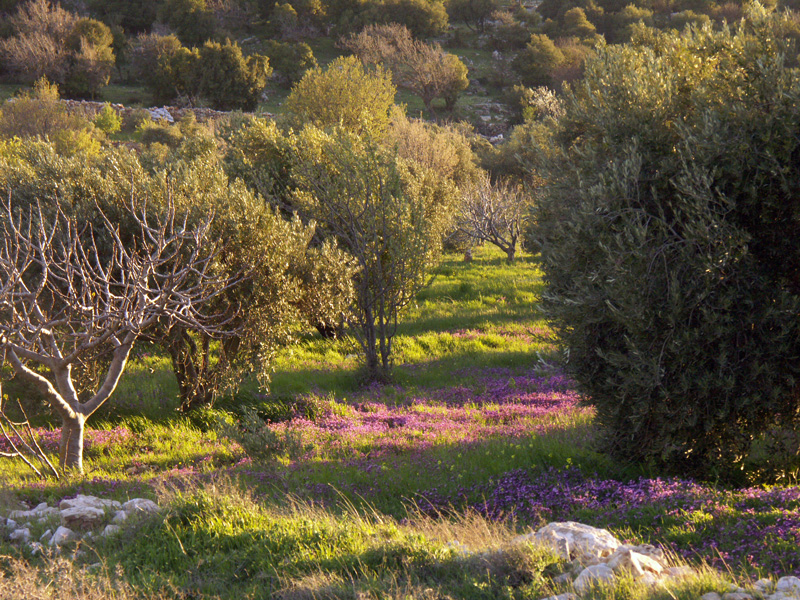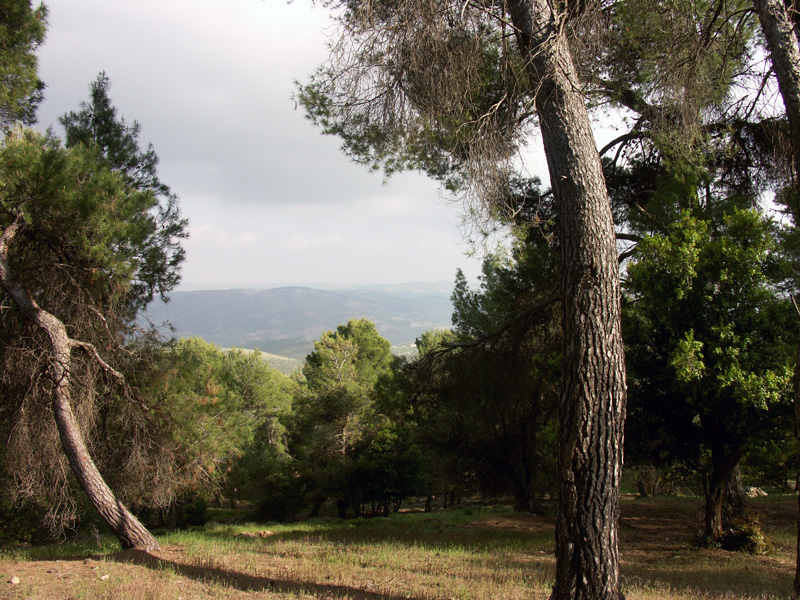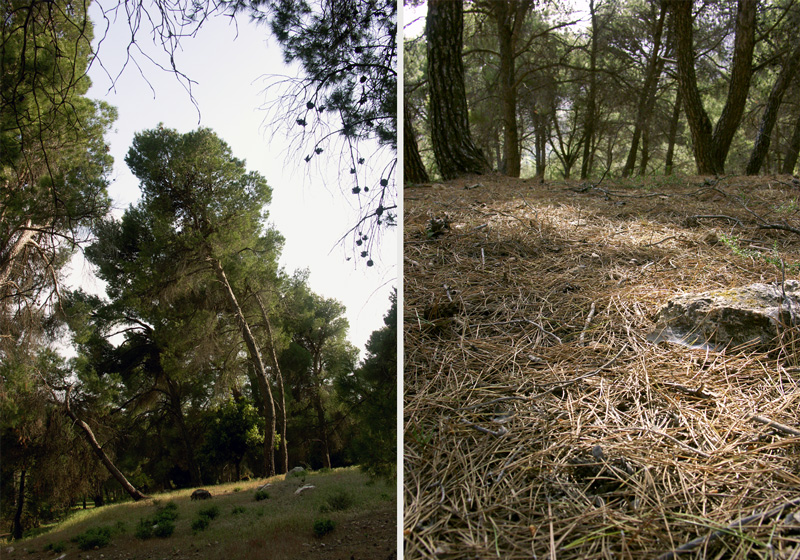Fine Pine
There are still some hidden roads in the Jordanian hinterland that you can discover and keep as secret. Many of such roads, besides giving you practical shortcuts, are often scenic drives, with hardly any traffic, making it possible to slow down and look more at the surrounding landscapes than the road.
On the road between Amman and Jerash, immediately after crossing the bridge on the Zarqa River and passing through the nursery by the northwestern side of the road, you can find the starting point of one the most enjoyable drives in central Jordan. Within minutes after leaving the hectic Amman-Jerash highway, you start feeling at ease, and the meandering narrow country-road brings you deeper and deeper into rural and purer Jordan. Such side roads also bring you back in time, into Jordan of the 1960s.

The road gradually climbs up, out of the river’s basin and onto a landscape of fertile mini-plateaus and rugged rocky slopes, alternating and enriching the drive with changing scenery. Eventually after passing through oak thickets, between scattered farms and village houses, you arrive to a flattish landscape with the most fertile soil. From this point you can see the heights of Dibbeen to the northwest, dressed up in the unique and soothing green of the natural native pine forests.
The Dibbeen pine forest covers basically the eastern half of the Ajloun heights and some pockets to the east and northeast of the town of Ajloun in the direction of Souf. The highland between the Zarqa River, and all the way north till a few kilometers before Irbid, is sometimes referred to -geologically- as the “Dome of Ajloun”. The geomorphology of this region, including its height, has given it the privilege of good amounts of rain –and plenty of snow- that make the baseline a good habitat for pine trees. While the western slopes of the Ajloun region were naturally covered with stout shrub oak, the eastern ones have the larger pine trees with brighter green. The stretches of pine forests around Dibbeen and Ajloun are unique, as they mark the most eastern end of such forests around the Mediterranean basin. With the smaller stretches of pine thickets across the Zarka, in Zay, these pine forests are also marking the southern end of the spread of their species.

Unlike the Aleppo pine, which is usually used in forestation projects around the kingdom, the native Dibbeen pine tree is a piece of sculpture. Its massive twisted trunk looks like intertwined serpents, or like muscular torsos frozen from an act of choreography. The bases of these trees are composed of a root system that creeps above rocky grounds, for good distances, till it turns into a gap to reach the moist soil between the rocks. These aboveground roots animate the trees and make them look like octopi clinching to the limestone rocks. The upper parts of these trees are so dense, which makes them look like bronze sculpture. The forms, textures and outlines, of the most distinct characters, are so different from the usual fluffiness of other trees; beside the whiff of freshness oozing into the forest air, these pines are playing with the strongest forms in the way they condense their branches and needle foliage. They also articulate the most solid negative spaces between them. The result is a landscape with sharp lines, where the trees look like boulders of green rocks, resting on turning and leaning trunks in basalt gray.

So dense are some upper parts of some of the trees, that branches form a kind of canopy with hundreds of pinecones that have been accumulating for decades. Looking up at such composition, you even notice a layer dust, as if you are looking at the ceiling of a cave. The peculiar forms of the twisting trunks might hint to a survival reason. Could it be the solution for a stronger trunk, where braiding might act as a structural solution, twisting the wooden fibers like a rope, to carry snow loads? Or are these trees twisting and turning their waists to amuse us, and thus demand from us the duty of protection?
Jabal Ajloun destination is good for half a day; you can leave Amman after lunch and still be able to enjoy the landscape in good afternoon light. A full day can have the potentials for interesting combinations, such as visiting Rabad castle, Jerash archaeology, or just driving around many of the lesser-known villages. The drive from Amman to the Dibbeen forest takes you less than an hour. Instead of wasting time on food-preparing, making barbeque, or sitting in one spot for a picnic, a walk in the forest is much more exciting and informative for parents and children. For eating on the trip, simple sandwiches or some apples will do. Dibbeen is suitable for relaxation, for a thinking walk, and for exercising your muscles, eyes and lungs. Dibbeen can provide a good subject for painting, drawing and photography.